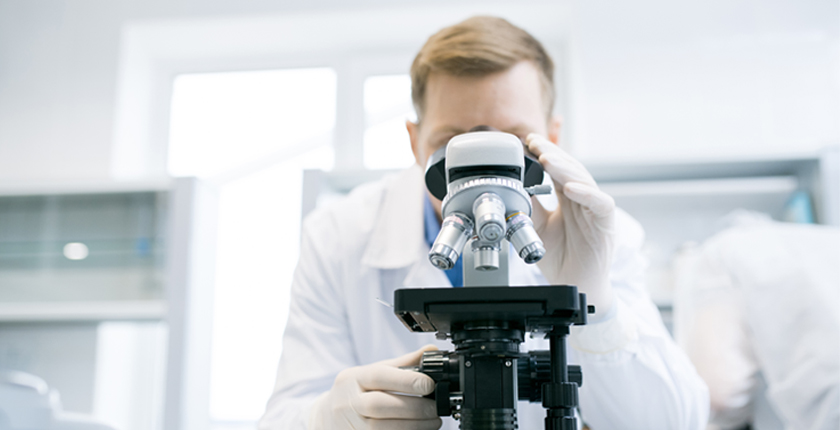
Br Mary Rice, EORTC Communication Consultant
TheEuropean Cancer Summit, organised by the European Cancer Organisation and held on line on 18 on 19 November brought together leading oncology experts, patient advocates, politicians and policy-makers to discuss the main issues impacting cancer policy, for the benefit of cancer patients, healthcare professionals and all people across Europe. An important session on health systems and treatment optimisation was chaired by EORTC Director General Dr Denis Lacombe and Professor Yolande Lievens, past President of ESTRO.
Prof Lievens introduced European Cancer’s Health Systems and Treatment Optimisation Network, launched in April 2020, and which has produced an action plan for the next three years. Dr Lacombe emphasised the importance of optimising both health systems and treatments. Health system optimisation involves achieving optimal and equitable access to cancer treatments; evidence-based implementation of those treatments; and a greater utilisation of epidemiology, health economics and health services research in order to produce relevant real-world data, he said. Priorities for treatment optimisation were achieving the best clinical outcomes, minimising toxicity, lowering the patient burden, and increasing cost-effectiveness.
Changes in science and regulation mean that new, innovative treatments can be brought rapidly to patients, he said. But how do we measure, identify and give access to innovation? « The past few years have shown that we have innovation, but we also realised that many new drugs and treatments do not fulfil their promises, and often clinically relevant questions are not answered because data are missing.»
In order to provide answers to these questions, a re-engineering of the process of treatment development will be necessary. « Once a drug is on the market, the process is far from finished. Many questions remain, such as the ultimate population, which is sometimes ill-defined during regulatory approval, can the treatment be used on other tumours, and what are the long-term effects of the treatment to give just a few examples. Maybe the whole system needs to be reversed, starting with asking what are the key clinical questions that need answering for healthcare systems and working backwards from that, » he said. The big gap that needed to be closed in order to have optimal treatment and access was between regulatory science and health technology assessment.
Professor Benjamin Besse, Chair of the EORTC Lung Cancer Group, contrasted the situation of metastatic lung cancer patients 20 years ago with that of today. “The landscape has changed completely,” he said. There are far more treatment options and before selecting any treatments, clinicians need to know the phenotype of the cancer. There are now dozens of lung cancers and treatment needs to be adapted accordingly. These targeted treatments mean that overall survival is between three and five times greater than it was with chemotherapy only.
But how many European patients have access to molecular screening? Many do not have the full set of biomarker testing that is recommended. And in the future, there will be many more targets to test. The EORTC SPECTA trial, involving 166 centres in 20 countries, sets out to provide answers to this question. However, it needs to be broader in scope, but without European funding for such a trial, this is problematic. Additionally, pharmaceutical companies screen for their own biomarkers only, he said. The goal of SPECTA is to include all biomarkers and have one test for all, and this is the kind of trial that should be promoted Europe-wide.
A second problem is the high cost of innovative treatments. But these may be reduced by trials of dosage and frequency of dosage. Being able to reduce dosage without losing efficacity may mean less toxicity and fewer hospital visits, as well as saving considerable amounts of money for healthcare systems. But once again, there are no European grants availability for this kind of study. Research in Europe should be based on European grants, not a constellation of national grants, he concluded.
Professor Bengt Jönsson, from the Stockholm School of Economics, said that the last decade had brought increased understanding of cancer, resulting in the introduction of new opportunities for diagnosis and treatment, with the promise of future improvements. But this has led to uncertainty about what is the best treatment in a particular case, and the fact that the treatment may not be available or affordable has led to further uncertainty. Until 1995 there were only 40 cancer medicines available to European patients, whereas between 1995 and 2018 the EMA approved 118 new medicines in 164 indications, he said. This increase in choice brought problems, however, because new medicines were often developed for small groups of patients, and had a very high cost.
Whereas the indirect cost of cancer had fallen as a result of new treatments meaning fewer premature deaths and patients being able to continue working, the direct costs have increased considerably over the last 20 years or so, he said. In order to achieve the best outcomes for patients and healthcare systems, the costs of investing in different areas of cancer care needed to be weighed against potential improvements in patient outcomes, and scarce resources used in a cost-effective way.
The rapid introduction of options for measurement of patient outcomes was vital, he said. Regulatory trials do not provide this information, meaning that it is difficult for HTA bodies to make decisions on pricing and reimbursement. Additionally, it is estimated 25% of al healthcare resources are spent on activities that provide little value to the patient, and if cost-effectiveness criteria are added, this share increases significantly. Well-designed policies are needed to correct this situation.
« Clinical and translational cancer research should address the needs of patients and society for information to make informed choices on the value of different options for using resources,” he concluded, and resource allocation for cancer in the health care system documented in a way that facilitates policy development to improve quality of care and patient outcomes.”
Bartosz Arlukowicz MEP, chair of the EU Beating Cancer Committee, said that achieving common basic standards of cancer care across Europe was very important. Differences in quality of care between countries should not be as large as they are now. There should be support for early, rapid diagnosis – time was vital in the fight against cancer. The EU should be supporting this. Shortages of cancer medicines should not be allowed to happen again, and research in rare and paediatric cancers should be strengthened.
Personalised medicine should be available to patients as widely as possible, he said. « But we need to establish common protocols for the drugs that have entered the market, especially in oncology – common information on how to use them in sequence and on the duration of treatment. The EU has to support this. We need to work in partnership to create common databases so that doctors from all EU countries can use the knowledge. We need more Europe in health to have more health in Europe. »
The wide-ranging panel discussion that followed covered such issues as patient-reported outcomes, scarce resources and their cost-effective use, and equitable and optimal access to treatments. Better access to and organisation of all data is also important, contributors said, and Europe had a role to play in this, as well as in funding trials. Regulation should be reformed in order to better serve patients and society.
At the end of the session, summit participants voted overwhelmingly in favour of the following resolution: Research in cancer care should address questions relevant and meaningful for patients and public health. Such research should follow an independent process to support optimal access for patients to evidence-based multidisciplinary cancer treatment.
To achieve this, a reorientation of health systems and research approaches in cancer is needed. This requires addressing gaps in clinical and health services research applied to cancer through a reverse engineering approach, starting with better definition of the important clinical and public health questions.





